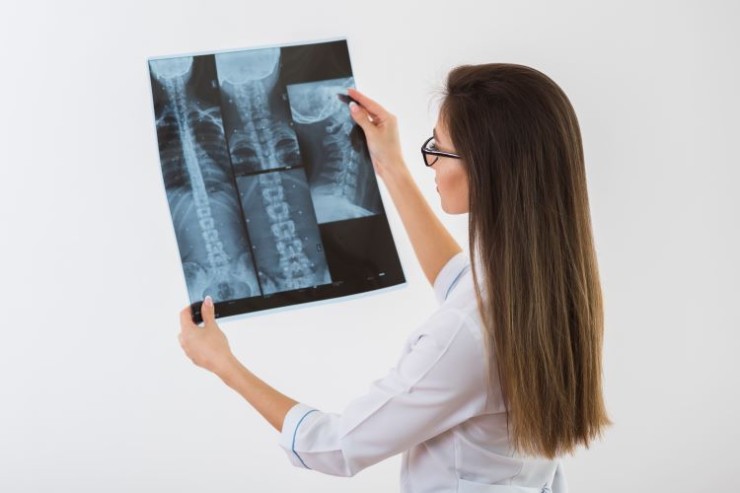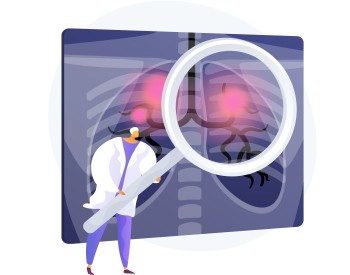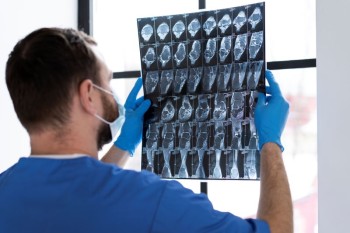
The human spine is a remarkable structure that plays a vital role in supporting the body and protecting the spinal cord.
CT Whole Spine Scan in India with Cost
CT Scan Whole Spine in
Detail
Introduction
The human spine is a remarkable structure that plays a vital role in supporting the body and protecting the spinal cord. When comprehensive imaging is necessary, a Whole Spine CT Scan becomes a valuable diagnostic tool. In this article, we will delve into the details of Whole Spine CT Scans, their significance, and the information they provide about spinal health.
Importance of Whole
Spine CT Scan
A Whole Spine CT Scan is crucial for evaluating the entire spinal column, including the cervical, thoracic, and lumbar regions. It offers detailed cross-sectional images, aiding in the diagnosis of various spinal conditions, such as fractures, tumors, and degenerative disorders.
Preparation for Whole Spine CT Scan
Patients undergoing a Whole Spine CT Scan may need to follow specific preparations, such as fasting, removing metal objects, and informing healthcare providers about any existing health conditions or medications. These preparations ensure the accuracy of the imaging results.
Procedure of Whole Spine CT Scan
The procedure involves lying on a table that moves through the CT scanner, which captures detailed images of the entire spine. It's crucial for patients to remain still during the scan to obtain clear and accurate images.
Benefits and Risks
Whole Spine CT Scans provide high-resolution images, enabling healthcare professionals to assess the entire spine comprehensively. While the benefits of accurate diagnosis are significant, it's essential to consider the exposure to ionizing radiation as a potential risk. Healthcare providers weigh these factors before recommending a Whole Spine CT Scan.
Interpreting CT Scan Whole Spine Results
Expertise is required to interpret the results of a Whole Spine CT Scan accurately. Radiologists analyze the images to identify any abnormalities, such as herniated discs, spinal fractures, or spinal cord compression. The detailed information guides further diagnostic and treatment decisions.
Conditions Diagnosed
Through Whole Spine CT Scan
Whole Spine CT Scans are instrumental in diagnosing a range of spinal conditions, including spinal fractures, herniated discs, spinal tumors, and abnormalities in the spinal cord or surrounding structures. The comprehensive images allow for precise identification and characterization of these issues.
Alternatives to Whole Spine CT Scan
While Whole Spine CT Scans provide detailed images, alternative imaging methods like MRI or X-rays may be considered based on the specific clinical scenario. Each method has its strengths and limitations, and the choice depends on the information needed for an accurate diagnosis.
Conclusion
In conclusion, a Whole Spine CT Scan provides a comprehensive view of the spinal column, aiding in the diagnosis and management of various spinal conditions. The detailed imaging allows healthcare professionals to make informed decisions, ensuring the best possible care for patients with spinal issues.
Frequently Asked Questions About Whole Spine CT Scan
1. What does a Whole Spine CT Scan encompass?
A Whole Spine CT Scan includes imaging of the entire spinal column, from the cervical to the lumbar region, providing a comprehensive view of the spine's structure.
2. How long does the procedure take?
The duration of a Whole Spine CT Scan is relatively short, typically taking around 30 to 45 minutes.
3. Are there any side effects associated with Whole Spine CT Scans?
While generally safe, exposure to ionizing radiation is a potential risk. However, the benefits of accurate diagnosis usually outweigh the risks, and healthcare providers take precautions to minimize radiation exposure.
4. Is sedation required for the scan?
Sedation is usually not required for a Whole Spine CT Scan. Patients are required to remain still during the procedure, but most find it tolerable without sedation.
5. Can pregnant women undergo a Whole Spine CT Scan?
Pregnant women are generally advised to avoid ionizing radiation during pregnancy. Alternative imaging methods may be considered, and consultation with healthcare providers is crucial to weigh the risks and benefits.
6. Can Whole Spine CT Scans detect spinal cord injuries?
Yes, Whole Spine CT Scans are effective in detecting spinal cord injuries, including fractures, dislocations, and compression, providing crucial information for appropriate medical intervention.
7. Are there any age limitations for undergoing a Whole Spine CT Scan?
Whole Spine CT Scans are generally safe for individuals of all ages. However, specific considerations may apply to pediatric or elderly patients, and healthcare providers assess the necessity based on individual health conditions.
8. How often can one undergo a Whole Spine CT Scan?
The frequency of Whole Spine CT Scans depends on the medical necessity and the patient's health condition. Healthcare providers determine the need for repeat scans based on individual cases.
9. Can Whole Spine CT Scans diagnose spinal infections?
Yes, Whole Spine CT Scans can help diagnose spinal infections by providing detailed images that reveal abnormalities in the spinal bones and soft tissues, aiding in accurate diagnosis and treatment planning.
10. What information can Whole Spine CT Scans provide about disc herniations?
Whole Spine CT Scans offer detailed visualization of spinal discs, allowing healthcare professionals to identify herniations, bulges, or other abnormalities in the intervertebral discs, assisting in the diagnosis of disc-related issues.
11. Is contrast dye used in Whole Spine CT Scans?
In some cases, healthcare providers may use contrast dye during a Whole Spine CT Scan to enhance the visibility of certain structures. The decision to use contrast depends on the specific diagnostic and patient considerations.
12. Can Whole Spine CT Scans be performed on individuals with metal implants?
While Whole Spine CT Scans may be possible with metal implants, it's essential to inform healthcare providers about any metallic objects or implants in the body, as they can affect the quality of the imaging.
13. How soon can patients resume normal activities after a Whole Spine CT Scan?
Patients can typically resume normal activities immediately after a Whole Spine CT Scan. There is usually no downtime, and individuals can go about their daily routines without any restrictions.
14. What role does Whole Spine CT play in surgical planning?
Whole Spine CT Scans play a crucial role in surgical planning by providing detailed information about the spine's anatomy and any abnormalities. Surgeons use these images to plan and execute precise interventions.
(0)
Login to continue



